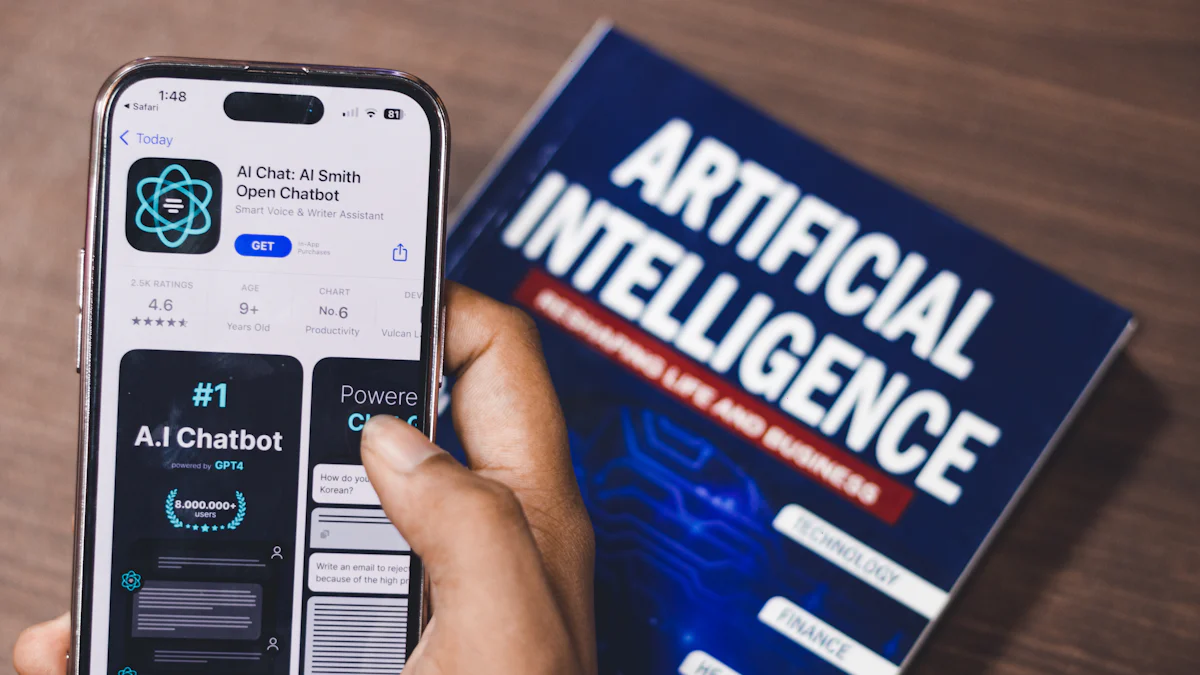
In the realm of AI, diffusion models stand out as powerful tools reshaping the landscape of artificial intelligence. The quest for innovation drives the relentless pursuit of AI acceleration, propelling advancements in hardware and algorithms. This blog embarks on a journey to explore the synergy between diffusion models and acceleration techniques, unraveling their pivotal roles in revolutionizing AI capabilities.
# Overview of Diffusion Models
In the realm of artificial intelligence, diffusion models have emerged as a groundbreaking approach reshaping the landscape of AI capabilities. These models, characterized by their ability to generate high-fidelity images, videos, and sounds, represent a significant leap forward in the field. The rapidly expanding body of work on diffusion models categorizes research into three key areas: efficient sampling (opens new window), improved likelihood estimation (opens new window), and handling data with special structures. By combining diffusion models with other generative models, researchers unlock new possibilities for enhanced results.
The applications of diffusion models span various fields, showcasing their versatility and potential impact across industries. From image and video generation to time series forecasting and anomaly detection (opens new window), these models offer exciting opportunities for researchers, practitioners, and entrepreneurs alike. Their ability to model complex sequential data has garnered attention both in academia and industry.
Diffusion models stand as a testament to the innovative strides (opens new window) in AI technology. With record-breaking performance in many applications and a paradigm shift in deep generative models, they push the boundaries of what machines can create and imagine.
# Hardware Acceleration Techniques
In the realm of AI acceleration, GPUs play a pivotal role in enhancing computational performance. These AI accelerators (opens new window), known for their superior processing power, have revolutionized neural network training by handling vast datasets efficiently. Companies like Nvidia and AMD design graphics processing units with specialized AI hardware, making them ideal choices for both training and inference tasks.
The introduction of Intel GPU Xe marks a significant advancement in discrete graphics processors tailored for AI workloads. Optimized for efficiency, the Intel GPU Xe family achieves top-tier performance while consuming minimal power. This innovation aligns with the growing demand for accelerated AI applications across various industries.
Furthermore, the AI Accelerator Chips Market reflects this surge in demand, with a steady growth rate projected from 2023 to 2030. These specialized microprocessors cater to complex artificial intelligence computations, particularly deep learning neural networks requiring substantial data processing power and low latency.
Expanding beyond GPUs, Intel offers a comprehensive hardware portfolio to power diverse AI solutions across edge devices, data centers, and cloud environments. Leveraging built-in AI features like Intel Accelerator Engines maximizes performance across a spectrum of AI workloads.
# Optimization Strategies
# Algorithmic Improvements
Convolution Techniques (opens new window)
In the realm of AI acceleration, convolution techniques play a crucial role in enhancing the efficiency of neural networks. By breaking down input data into smaller parts and applying filters to extract essential features, convolutional neural networks achieve remarkable accuracy in image recognition tasks. The integration of convolutions optimizes the learning process, enabling models to recognize patterns and objects with precision.
Winograd Convolution
Another significant advancement in optimization strategies is the implementation of Winograd convolution. This technique reduces the number of arithmetic operations required for convolutions, leading to faster computation and improved model performance. By transforming the convolution operation into a series of matrix multiplications, Winograd convolution streamlines the processing pipeline, enhancing overall efficiency.
# Advanced Techniques
Partially Fused Softmax (opens new window)
Innovative approaches like partially fused softmax further elevate the capabilities of AI systems. By combining multiple softmax operations into a single computation step, this technique reduces computational overhead and accelerates inference processes. Partially fused softmax enhances model efficiency while maintaining high accuracy levels, making it a valuable asset in optimizing neural network architectures.
GELU Activation
The Gaussian Error Linear Unit (GELU) activation function stands out as a cutting-edge technique for improving deep learning models' performance. By introducing non-linearity and smoothness to neural networks, GELU activation enhances gradient flow during training, leading to faster convergence and superior results. This advanced activation function is widely adopted in state-of-the-art models due to its ability to boost overall model performance significantly.
# Research and Development
Current Research
Ongoing research efforts focus on advancing optimization strategies to meet the evolving demands of AI applications. Researchers explore novel algorithms and techniques to streamline neural network computations further. Recent studies emphasize leveraging hardware accelerators effectively alongside algorithmic improvements for enhanced model performance across diverse datasets.
Future Directions
The future of AI acceleration through optimization strategies holds immense potential for groundbreaking advancements. Anticipated developments include more efficient convolutional techniques, innovative activation functions, and collaborative research initiatives bridging hardware acceleration with algorithmic enhancements. As AI continues to evolve rapidly, optimization strategies will play a pivotal role in shaping the next generation of intelligent systems.
# Case Studies and Examples
# Stable Diffusion with GPUs (opens new window)
NVIDIA's Contributions
- NVIDIA, a pioneer in GPU technology, has made significant strides in advancing stable diffusion models through its cutting-edge graphics processing units (GPUs). By harnessing the computational power of GPUs, NVIDIA has accelerated the execution of large diffusion models, thereby enhancing AI capabilities. The integration of NVIDIA GPUs in stable diffusion processes underscores their commitment to pushing the boundaries of artificial intelligence.
Qualcomm (opens new window)'s Optimizations
- Qualcomm, a key player in mobile technology, has optimized on-device stable diffusion to run efficiently on Android smartphones (opens new window). Leveraging the power of Adreno and Apple GPUs, Qualcomm has spearheaded advancements in executing large diffusion models on mobile platforms. This optimization paves the way for seamless AI experiences on handheld devices, showcasing Qualcomm's dedication to enhancing user interactions through innovative AI solutions.
# Generating Images
Techniques
- The generation of high-fidelity images using diffusion models involves intricate techniques that leverage neural graphics and deep learning algorithms. By executing large diffusion models gaining insights from neural networks, researchers can produce visually stunning images with unparalleled realism. These techniques combine path tracing and memory management to optimize image generation processes efficiently.
Applications
- The applications of generative artificial intelligence extend beyond image generation to diverse fields such as data visualization, creative arts, and medical imaging. Through opensource deep learning GAN applications like CLIP model and Core Systems, generative AI continues to revolutionize how we perceive and interact with visual content. The latest research for graphics showcases the immense potential of generative AI in shaping future innovations across various industries.
# Generative Adversarial Networks (opens new window)
Role in AI
- Generative adversarial networks (GANs) play a pivotal role in advancing artificial intelligence by enabling the creation of synthetic data with remarkable accuracy. Through deep neural network-based generators like EGSR and GELU activation functions, GANs facilitate data augmentation and model training processes. Their significance lies in augmenting datasets for improved model performance and robustness.
Examples
- Notable examples of GAN applications include the execution of SDAI tasks using AMD GPUs support and Andrew Lukyanenko's contributions to GPU research at Intel. These examples highlight the versatility of GANs in executing complex AI tasks across different hardware platforms. Anton Kaplanyan's work on neural graphics further demonstrates the transformative impact of GANs on generating realistic visual content.
In the realm of artificial intelligence, diffusion models (opens new window) and AI acceleration converge to redefine the boundaries of innovation. The symbiotic relationship between cutting-edge hardware (opens new window) and advanced algorithms propels AI capabilities to new heights. As industries embrace AI for enhanced experiences and operational efficiencies, the future holds boundless opportunities for growth and transformation. The evolution of AI accelerators will continue to shape diverse sectors (opens new window), driving progress and revolutionizing how we interact with technology. With a relentless pursuit of excellence, the fusion of diffusion models and acceleration techniques heralds a new era of intelligent systems.



